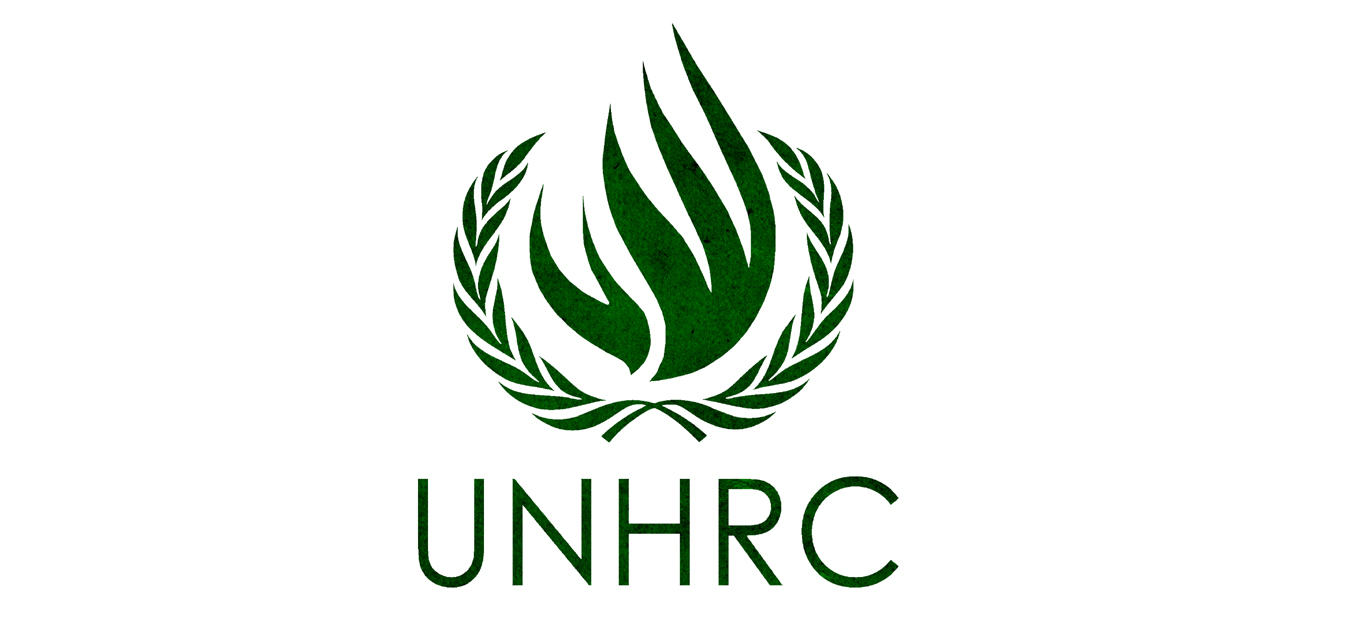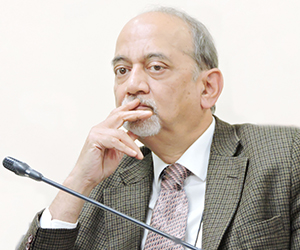The High Commissioner for Human Rights, Zeid Ra’ad Al Hussain submitted his Report on “Kashmir” on 14th June, 2018. The Report comes at a time when the Human Rights Council (HRC) has just begun its session in Geneva. The timing could be a coincidence, but the methodology, and selective use of facts raise troubling questions.
In the Report the High Commissioner states that his main focus is the human rights situation in the Indian State of Jammu & Kashmir (J&K) from July 2016 to April 2018. The Report also examines human rights violations in “Pakistan-Administered Kashmir”. These, however, according to the Report, “are of a different caliber and magnitude and of a more structural nature”. The Report “urges Pakistan to end the misuse of anti-terror legislation”. It also makes a reference to the interim constitution of the “Azad Jammu & Kashmir” (AJK) to call for immediate release of political activists, journalists and others. The Report states that the mandate of the office of the High Commissioner for Human Rights flows from the UN General Assembly (UNGA) Resolution 48/141. It claims that the Report is based on “remote monitoring of the human rights situation” in the absence of unconditional access given by either India or Pakistan.
The recommendation to set up the office of the High Commissioner for Human Rights emerged from the World Conference on Human Rights. As noted by the Report, it was eventually established by the UNGA Resolution 48/141. The operative paragraph 4 (b) of the resolution laying down the High Commissioner’s mandate, states that High Commissioner’s responsibilities include the following: “To carry out the tasks assigned to him/her by the competent bodies of the United Nations system in the field of human rights and to make recommendations to them with a view to improving the promotion and protection of all human rights”. “
The Report on Kashmir is not part of the tasks assigned to the High Commissioner by any competent body of the UN system; it is a self-assumed mission. Though the main focus of the Report is claimed to be events of 2016-18, the Report has an extensive section on the background, where the High Commissioner has selectively quoted historical origin, thus imparting a political dimension to the Report.
The High Commissioner’s Report is based on ‘remote monitoring’ in the absence of access to either the Indian or Pakistani side. Even without an actual visit, there are facts available in public domain. Though the Pakistan Occupied Kashmir (POK), unlike the Indian State of J&K, does not have free press, there is a growing body of literature available in Pakistan and international media about the status of civil and political rights in that country. It will be instructive to study the debate on Universal Periodic Review (UPR) of the report submitted by Pakistan to the Human Rights Committee (HRC) in pursuance of its obligations under International Covenant on Civil and Political Rights (ICCPR). Though there is a passing reference to deliberations in the HRC in paragraph 152 of the Report, it misses (?) the broader issues, which are brought out later in this article.
The High Commissioner’s Report states: “At the time, Hari Singh, the Hindu ruler of the Muslim-majority kingdom of Jammu and Kashmir, initially chose to remain independent. However, on 26 October 1947, under pressure from invading Pashtun forces, he signed the Instrument of Accession to India.”Maharaja Hari Singh had signed a Stand-Still Agreement with both India and Pakistan. While India respected the Agreement, Pakistan chose to violate it by organising an invasion. This invasion was not limited to ‘Pashtun forces”, as the High Commissioner has claimed, but included elements of Pakistan’s regular Armed Forces. This has been extensively documented by Joseph Korbel, member of the UN Commission on India and Pakistan (UNCIP) in his book ‘Danger in Kashmir’. It is also recognised by the UN Resolution which called for withdrawal of all forces under the control of Pakistan.
The Report notes: “The plebiscite was to take place after the implementation of various measures foreseen in Resolution 47”. The chief amongst these measures was withdrawal of Pakistani forces. This has never happened. What started as an invasion, has transmuted into an illegal occupation of territory of the Indian State of J&K under the name of ‘Azad Kashmir”.
The Interim Constitution of AJK, which the High Commissioner’s Report mentions, was adopted in 1974, almost three decades after Pakistan’s creation, and illegal occupation of PoK. The Constitution was to keep alive the fiction of special status for that territory, till a plebiscite was held to decide its final status. As the High Commissioner’s Report itself acknowledges in Paragraph 147, “the interim constitution of AJK has placed several restrictions on anyone criticizing AJK’s accession to Pakistan”. This is described mildly as being “in contravention to international standards on the rights to freedoms of expression and opinion, assembly and association”. What the Report overlooks is that the restriction actually violates something more fundamental - the right of self-determination of the people of PoK, by presenting accession to Pakistan as a pre-determined conclusion.
By separating Gilgit-Baltistan from the PoK, Pakistan has further weakened its stand on the right of self-determination of the people of POK. The decision is a step towards absorbing part of the territory of POK in Pakistan. The Report has touched on separation of Gilgit-Baltistan from PoK, but down-played its import by presenting this as a restriction on freedom of expression. There is a consistency in the narrative given by the High Commissioner. It slants, down-plays, or omits, major developments, which may be embarrassing to Pakistan.
The Report refers to Pakistan’s Kargil mis-adventure in Paragraph 41, without stating that Pakistan had crossed the Line of Control: “Another war took place between India and Pakistan in 1999, albeit limited to the Line of Control in the Kargil area of Ladakh”. Pakistan’s intrusion across the Line of Control has been recognised by many international, and even Pakistani commentators. William Milam, the then US Ambassador to Pakistan in his recent review of a book, “From Kargil to the Coup: Events That Shook Pakistan”, by Pakistani author Nasim Zehra, has mentioned his interaction with the highest echelons of Pakistan Government: “The final scene that will live forever in my memory is really the denouement. Toward the end of June, President Clinton sent General Zinni, to see if he could persuade Musharraf to withdraw. At their meeting, it was clear to me that Zinni needn’t have come – Musharraf was already persuaded. His body language told me so. I am convinced that he knew the gambit had failed by then and the Pakistani forces in Kargil were slowly being rolled up by the Indians. He wanted to cut his losses but wanted the prime minister to take the blame. He deferred to the prime minister on any decision to withdraw.” i
The Report of the High Commissioner criticises Indian military justice system (Paragraph 51). It ignores the basic difference between the Indian and Pakistani military justice system. The scope of the Indian military judicial system is limited to the trial of the Indian military; it does not have jurisdiction over civilians. In case of Pakistan, the military courts, under the garb of fighting terrorism, have extended their authority over the civilian population. This is brought out by the Geneva International Center for Jurists in its commentary on Universal Periodic Review of Pakistan’s Report to the Human Rights Committee in pursuance of its obligations under International Covenant on Civil and political Rights: “Human rights and counter-terrorism: Pakistan had approved secret military courts to try civilians and impose the death penalty in terrorism-related offenses. Arbitrary arrest and detention continue to be Reported in connection with counter-terrorism operations. Drone attacks continue to kill civilians.” ii
The Report of Geneva International Center for Jurists goes on to state: “Administration of justice, including impunity and the rule of law: It was stated that the criminal justice system had completely collapsed, particularly due to the Government’s outsourcing of the entire judicial process to the military. The proceedings before military courts failed to comply with national and international fair trial standards.” iii It is surprising that while extensively quoting ‘civil society”, the High Commissioner for Human Rights did not see it fit to follow the observations of the UN mechanism, located in Geneva, to objectively assess the situation in the Indian State of J&K, and the PoK.
The high Commissioner’s Report in paragraph 159 under the title Violation of Land Rights, states: “Several communities in G-B have been raising concerns about the impact of the CPEC on their lives.” This is indeed a violation of land rights of affected individuals. But the issue has wider significance, conveniently omitted by the High Commissioner. Pakistan has alienated parts of the Indian State of J&K, illegally occupied by it, to China, in 1961. Its recent decision to invite China to build the China-Pakistan Economic Corridor (CPEC), through the territory of PoK, is yet another example of Pakistan’s policy of giving primacy to its geo-strategic interests over human rights of individuals.
Recent killing of an eminent Kashmiri journalist in the Valley, Shujaat Bukhari, by terrorists is a reminder to the challenge faced by the civil society, and pluralistic order by terrorists being aided and abetted by Pakistan. The killing of Burhan Wani, a leader of Hizb-ul-Mujahideen (HuM), is the beginning of the High Commissioner’s Report. The Report has repeatedly described the HuM and other groups of its kind, as “Armed Groups”, lending legitimacy to terrorism. Use of teen-agers as human shield, or to mount attacks on the security forces, is not a civil society movement, which has drawn increasing numbers of ‘the middle class’, as the High Commissioner’s Report states.
The recent events in Catalonia and Iraq have shown that the international community has little appetite for attempts to break-up sovereign, independent States in the name of self-determination. Pakistan has remained under direct, or indirect, military rule for much of its existence. Its military has played a role in suppressing popular movements in third countries. Zia-ul-Haq, led the Brigade which committed the massacre of Palestinians in Jordan, an event known as Black September. For his exertions, he reaped rich gains. He was not the first choice of Prime Minister Bhutto to head the Pakistan Army. The decision was clinched by a phone call from King Hussain of Jordan. Prince Zeid Ra’ad Al Hussain, who has been in the news for his advocacy of the Palestinian cause, would no doubt remember the episode.
Violation of human rights must be condemned. But it must be recognised that an open, transparent, democracy provides the best safe-guard, rather than an ante-diluvian set of beliefs, which challenges modern, liberal order, and the values on which the UN system is based.
At the moment, the State of J&K has been placed under the Governor’s rule. This was no doubt partially caused by the strain which the system came under from terror attacks. The Government’s offer of cease-fire during the holy month of Ramadan did not bring a positive response from the terror groups. But while this is a temporary phenomenon in India’s case, it is the default setting for Pakistan for much of its existence, and unfortunately for the “Azad” J&K, a state of permanency.
Looking beyond the plethora of facts and events, there is a contrast that stands out between Indian and Pakistani models. The one is based on democracy, liberal order and pluralism. The other is based on a narrow ideology, which equates religion with self-determination, and self-determination with Pakistan’s territorial interests.
(The writer has served in Pakistan, Saudi Arabia and dealt with UN matters in the Ministry of External Affairs)
Endnotes:
i. The Friday Times, 8 June 2018, www.thefridaytimes.com/tft/revisiting-the-kargil-misadventure/
ii. Geneva International Centre for Justice, Universal Periodic Review – Third National Report of
Pakistan, 13 December 2017, http://www.gicj.org/conferences-meetings/upr-sessions/1306-
iii. Ibid
The paper is the author’s individual scholastic articulation....
Cover Image Source: http://hylc.in/archives/hylc_2017/hrc.html











Post new comment